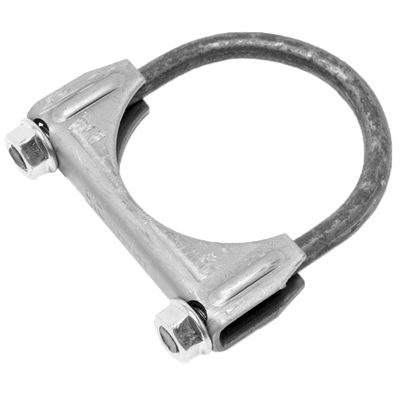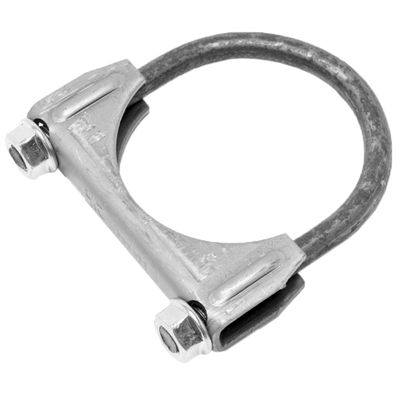Answer
Aug 14, 2024 - 12:22 PM
Stopping leaks using the Walker Exhaust 35337 Exhaust Clamp involves proper installation and ensuring that the clamp is tightly secured to create a strong seal between the exhaust components. Here’s a step-by-step guide:
Tools and Materials Needed:- Walker Exhaust 35337 Exhaust Clamp
- Wrench or socket set (typically a ratchet with the appropriate socket size)
- Protective gloves
- Penetrating oil (if necessary)
1. Prepare the Exhaust Components:
- Inspect the Exhaust Pipes: Ensure that the exhaust pipes you are clamping together are clean and free of rust, dirt, or debris. Clean any surfaces where the clamp will be installed to ensure a good seal.
- Align the Pipes: Make sure the exhaust pipes or components that you are connecting are properly aligned. The ends of the pipes should fit together smoothly without gaps.
2. Position the Exhaust Clamp:
- Place the Clamp Over the Joint: Slide the Walker 35337 Exhaust Clamp over the area where the two exhaust components meet. The clamp should be centered over the joint to ensure even pressure is applied when tightened.
- Correct Orientation: Ensure that the U-bolt of the clamp wraps around the outside of the exhaust pipes, and the saddle (the curved metal piece) is positioned over the joint where the pipes meet.
3. Tighten the Clamp:
- Start Tightening: Begin tightening the nuts on the U-bolt evenly. Use a wrench or socket set to do this. Tighten each side a little at a time, alternating between the two nuts to ensure even pressure and avoid skewing the clamp.
- Apply Sufficient Torque: Tighten the nuts until the clamp is snug and secure. The amount of torque required may vary, but it’s typically recommended to tighten until the pipes are securely clamped and there’s no movement.
- Avoid Over-tightening: Be cautious not to over-tighten, as this can crush or deform the exhaust pipes, leading to restricted exhaust flow or further leaks.
4. Check for Leaks:
- Visual Inspection: After tightening the clamp, visually inspect the joint to ensure there are no gaps or visible leaks.
- Run the Engine: Start the vehicle and let it idle. Listen for any hissing sounds or observe for any exhaust gases escaping from the joint. If you notice any leaks, you may need to tighten the clamp a bit more.
- Recheck After Driving: After driving the vehicle for a short distance, recheck the clamp to ensure it remains tight and there are no leaks. Exhaust systems can expand and contract with heat, so it’s a good idea to verify the clamp’s tightness after the system has been heated and cooled.
5. Additional Tips:
- Use Penetrating Oil (if necessary): If the nuts on the clamp are difficult to tighten due to rust or corrosion, apply a small amount of penetrating oil to help them turn more easily.
- Double Check the Fitment: Make sure the Walker 35337 clamp is the correct size for your exhaust pipes. A clamp that is too large or too small will not create a proper seal.
Using the Walker Exhaust 35337 Exhaust Clamp to stop leaks requires proper alignment, correct positioning of the clamp, and ensuring that it is evenly and securely tightened. By following these steps, you can effectively stop exhaust leaks and maintain the integrity of your exhaust system. If leaks persist, consider inspecting the exhaust components for damage or considering other sealing methods like exhaust paste or sealant in conjunction with the clamp.





Add New Comment